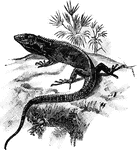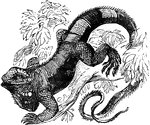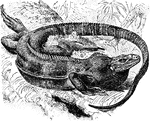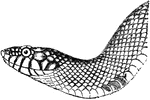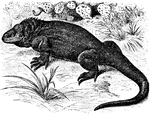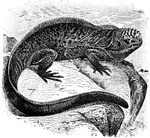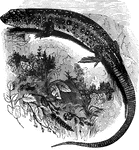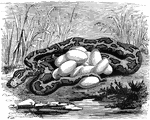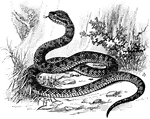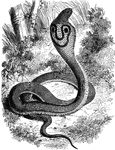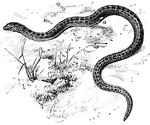The Snakes and Lizards ClipArt gallery offers 147 illustrations of the order Squamata, which includes snakes, lizards, geckos, iguanas, skinks, and worm lizards.

Iguana
Reptiles that have tall, flat plates coming out of their back like spines, when adults. A common pet…

Common iguana
A large lizard, the common iguana is common to the tropical regions of the Americas. It spends much…

Common Iguana
"When full-grown it attains a length of four feet. It is a very gentle creature, and perfectly harmless,…

King Cobra
Illustration of a King cobra, Ophiophagus elaps, also called a Shiva snake or Siva snake because it…

Lizard
Lizards are scaly reptiles, having two pairs of limbs and an elongated body, with a long, tapering tail,…

Lizard
Lizards are good climbers and fast runners, and usually live in trees. Some can change their skin color…

Lizard
"Lizard is the popular name of numerous reptiles having usually two pairs of limbs and an elongated…

Lizard
The popular name of an order of reptiles having four well developed limbs, each terminated by five toes…
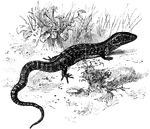
Northern Alligator Lizard
The Northern Alligator Lizard (Elgaria coerulea) is a lizard in the Anguidae family that was also known…
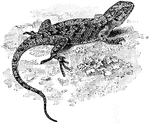
Eastern Fence Lizard
The Eastern fence lizard (Sceloporus undulatus) is a medium sized species of lizard common along the…
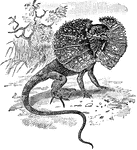
Frill-Necked Lizard
The Frill-Necked Lizard (Chlamydosaurus kingii) is a lizard in the Agamidae family. "C. kingi has a…
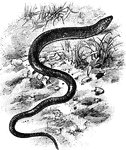
Eastern Glass Lizard
The Eastern Glass Lizard (Ophisaurus ventralis) is a legless lizard in the Anguidae family.

Ocellated Lizard
"Its size is about twenty inches. They feed almost exclusively on insects, but attack frogs, mice, etc.,…

Yellow-Throated Plated Lizard
The Yellow-Throated Plated Lizard (Gerrhosaurus flavigularis) is a reptile in the Gerrhosauridae family…

Sand Lizard
"The Sand Lizard is a common European lizard, about seven inches long, of which the tail is four. Usual…

Variegated lizard
Found in Brazil and Guiana, the variegated lizard (or teguexin) preys on mice, frogs, and other small…
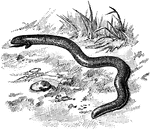
Four-Toed Worm Lizard
The four-toed worm lizard (Chirotes canaliculatus) is a reptile of the Amphisbaenidae family of usually…

Douglas's phrynosoma
Commonly known as the horned toad, Douglas's phrynosoma was first discovered in Salt Lake Valley.
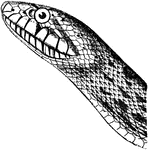
Pine Snake
A very large snake native to North America. It is known to reach lengths of up to twelve feet.

Puff-adder
These venomous snakes have triangular heads and short stocky bodies. They are a highly poisonous snake.
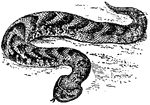
Puff-Adder
A highly poisonous African viper. It's name is derived from the habit of inflating its body when alarmed…

Python
"Pythons are the largest known serpents, which are found only in India and the islands of the Indian…

Rattlesnake
"Rattlesnake is the English name for any species of the American genus Crotalus, the tail of which is…

Rattlesnake
The general name of several species of venomous snakes, so named because of having a series of horny…
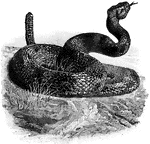
Rattlesnake
A venomous serpent whose tail ends in a rattle. It rattles its tail to warn potential predators to back…
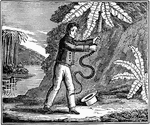
Conflict with a Rattlesnake
Conflict with a rattlesnake. Caption below illustration: "The snake when about a yard distant, made…
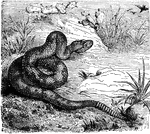
Northern Rattlesnake
"Although furnished with such deadly weapons, the rattlesnake can scarcely be termed a vicious animal,…
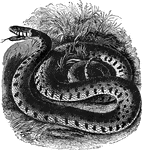
Common ring-snake
"The common snake of Europe... frequents woods, bogs, and other sheltered situations in the vicinity…
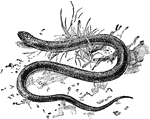
Scheltopusik
The scheltopusik or European legless lizard (Ophisaurus apodus) belongs to the genus of glass lizards:…

Bicolored sea-snake
The bicolored sea-snake is found in the waters of the Pacific Ocean, especially in the vicinity of Tahiti.
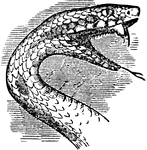
Serpent Head
"The prey of a serpent is oven thicker than the serpent itself, and to admit of its being swallowed,…
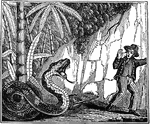
Escape from the Serpent of Ceylon
Miraculous escape from the royal serpent of Ceylon. Caption bellow illustration: "In dreadful anticipation…

Skink
The skink is common in Egypt and can reach 8-9 inches. In the U.S. the five-lined or blue skink is the…

Skink
A scaled, harmless lizard of the Scincidae family. Some have brilliant blue stripes running along the…
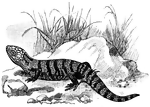
Skink, Giant Cyclodus
Cyclodus gigas. "They are harmless creatures, some inches long, natives mostly of warm countries, will…

Sandfish Skink
The sandfish (Scincus scincus) is a species of skink known for burrowing into the sand.
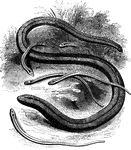
Slow-worm
Common in Europe, the slow-worm resembles a snake, but its internal structure is that of lizards.
